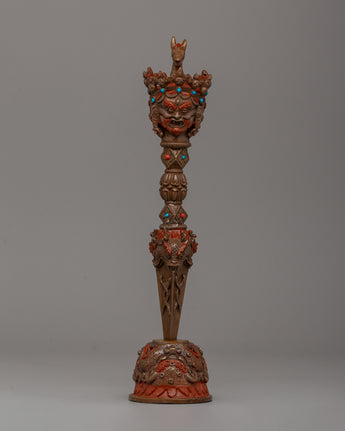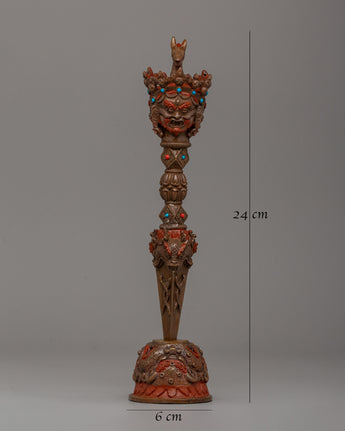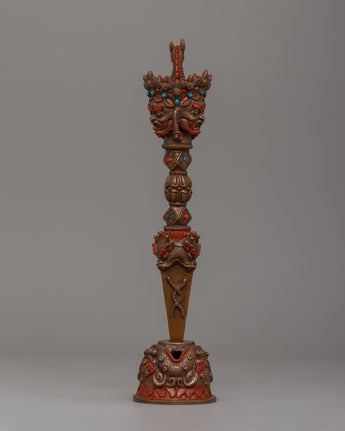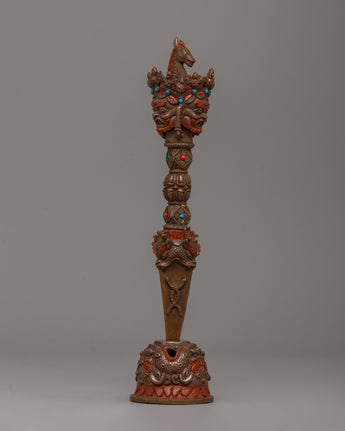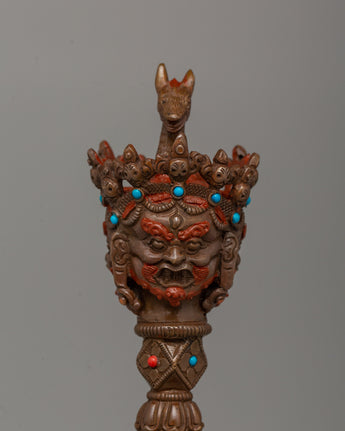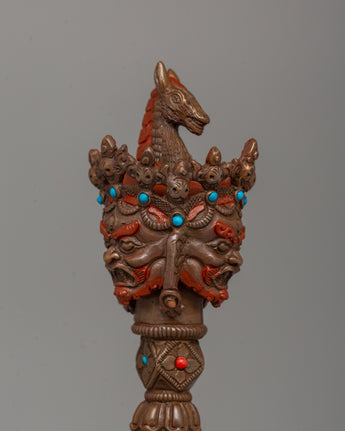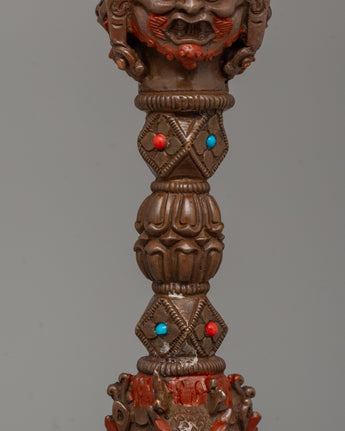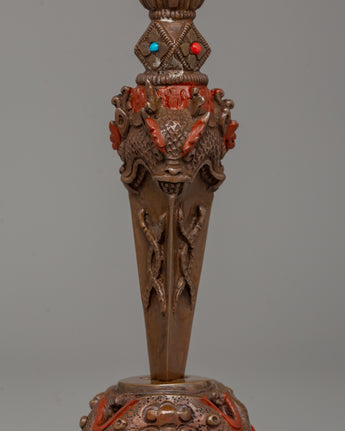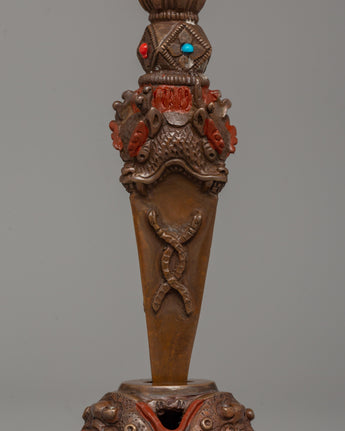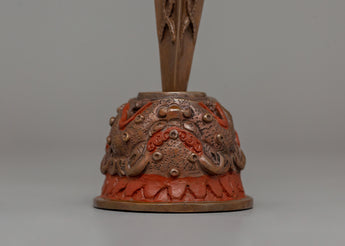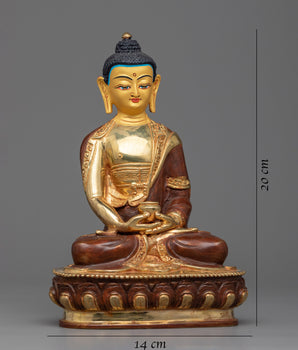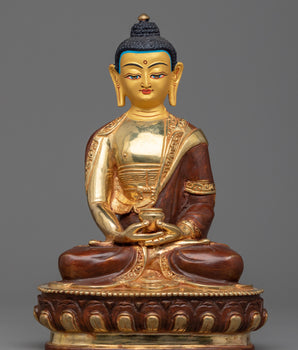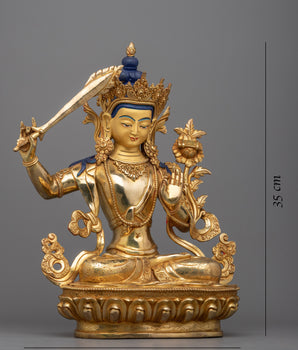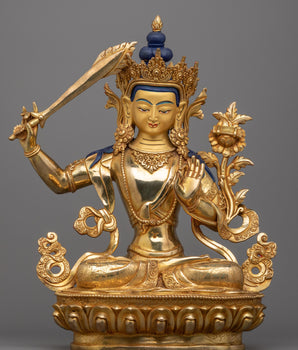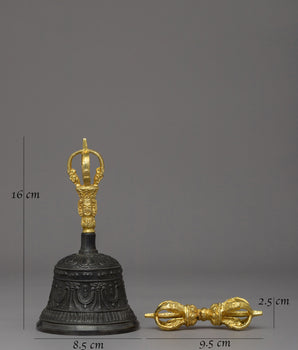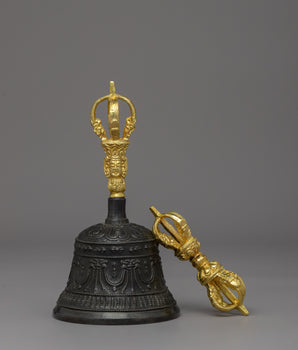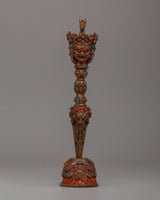
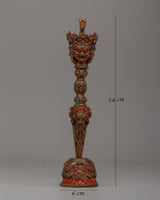
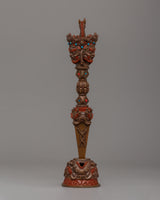
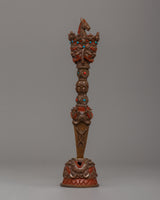
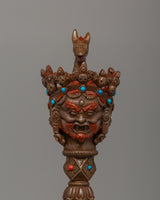
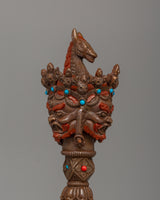
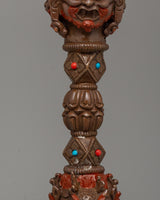
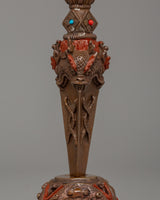
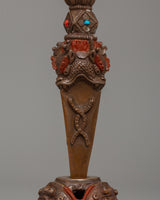
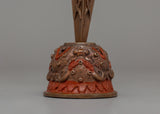
Purification Dagger Phurba | Vajrakilaya Ritual Tool

100% AUTHENTIC

HANDMADE

FREE SHIPPING
Handcrafted Oxidized Copper Purification Dagger Phurba for Protection
--------------------------------------------
Size: 24cm(Height) x 6cm(Width)
Weight: 0.57kg
Material: Oxidized Copper Body
--------------------------------------------
About The Ritual Item :
This exquisite purification dagger Phurba measures 24 cm in height and 6 cm in width and is expertly crafted from oxidized copper. The oxidized finish adds charm and boosts the piece's spiritual energy, making it compatible with traditional Tibetan Buddhist practices. The Phurba, a ceremonial dagger, is important in rituals because it represents cutting ties with negativity and illusion, allowing purification and transformation.
The Phurba's top features a fierce, dynamic face that emphasizes its protective qualities. The face is embellished with turquoise and coral accents, which are thought to enhance the Phurba's protective energy and spiritual clarity. These stones are strategically placed to add potency to rituals, improving the user's spiritual intent and strength.
The shaft of the Phurba is adorned with intricate details, demonstrating the exceptional craftsmanship of Tibetan artisans. The base is stable, firmly supporting the dagger while serving as a powerful purification tool. The vibrant colors of the stones contrast with the oxidized copper body, adding to the Phurba's commanding presence. This piece is functional ritual art and a symbol of sacred protection, making it a prized possession for any practitioner.
Introduction To The Phurba :
The ceremonial dagger (Sanskrit: Kila; Tibetan: phurba) is important for the expelling of evil and is thought to be especially effective in neutralizing the forces that obstruct Tantric Buddhist practice. It has ancient origins, first appearing in the Indian Rg Veda as the core blade of the vajra used by Indra to destroy the primordial cosmic snake Vritra. Kila, which means peg or stake in Sanskrit, was most likely associated with Vedic sacrifices. Meditation on the Vajrakila Tantra, an early Indian scripture first promoted in Tibet in the eighth century by Padmasambhava, one of the founding teachers of Tibetan Buddhism, is used to invoke the three-headed Vajrakila Buddha.
How to set up your own Buddhist Shrine?
Find a clean, quiet, and uncluttered spot
Set up an altar table, and cover it with an altar cloth that calls to you
Place your sacred item (statue, thangka, or a picture of Buddha) at the center


